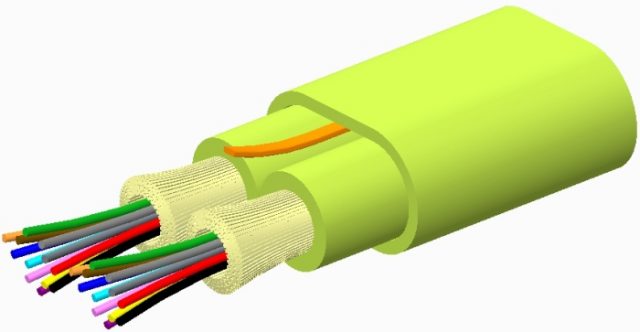 Facebook and Nokia completed multiple submarine field trials over a 5,500 km submarine cable between New York and Ireland – achieving spectral efficiency of 7.46 b/s/Hz and increasing the stated capacity of the system by almost 2.5 times.
Facebook and Nokia completed multiple submarine field trials over a 5,500 km submarine cable between New York and Ireland – achieving spectral efficiency of 7.46 b/s/Hz and increasing the stated capacity of the system by almost 2.5 times.
This submarine field trial of Nokia Bell Labs’ new probabilistic constellation shaping (PCS) technology used shaped 64-QAM.
The test included a 11,000 km round trip submarine transmission using shaped 64-QAM achieving a spectral efficiency of 5.68 b/s/Hz and a first demonstration of 200 Gb/s and 250 Gb/s wavelengths and 16-QAM modulation over a transatlantic submarine route using a real-time coherent DSP.
To increase the capacity capabilities of subsea fiber, Nokia and Facebook tested Nokia Bell Labs’ new probabilistic constellation shaping (PCS) technology. The test showed an increase of almost 2.5x more capacity than the stated optical transmission capacity of the system, demonstrating the feasibility of the technology across a challenging fiber-optic network.
PCS, an area of Nokia Bell Labs research, is a technique that uses shaped quadrature amplitude modulation (QAM) formats to adjust transmission capacity to near the physical limits of a given fiber-optic link.
In this experiment for an installed submarine link, conceived and planned by Facebook, PCS based on 64 QAM, combined with digital nonlinearity compensation and low-linewidth lasers, achieved a record spectral efficiency of 7.46 b/s/Hz, indicating the potential to upgrade this cable to 32 Tb/s per fiber in the future.
Transmission tests based on the Nokia Photonic Service Engine 2 (PSE-2) validated the transmission of 8-QAM wavelengths running at 200 Gb/s and 16-QAM wavelengths running at 250 Gb/s – a first for transatlantic transmission. 200G 8-QAM wavelengths supported a spectral efficiency of 4 b/s/Hz while exhibiting sufficient performance margin to support reliable, commercial operation.
“Facebook wants to increase the pace of adoption of next-generation optical technologies. This field trial with Nokia demonstrates that the scalable optical technology of PCS together with narrow linewidth laser sources can achieve capacities extremely close to the Shannon limit,” said Stephen Grubb, global optical network architect at Facebook.
“By demonstrating promising areas of Nokia Bell Labs research such as PCS, as well as coherent technologies available today, we hope to chart a path forward for the industry towards higher capacities, greater reach, and more network flexibility,” said Sam Bucci, head of optical networking at Nokia.
